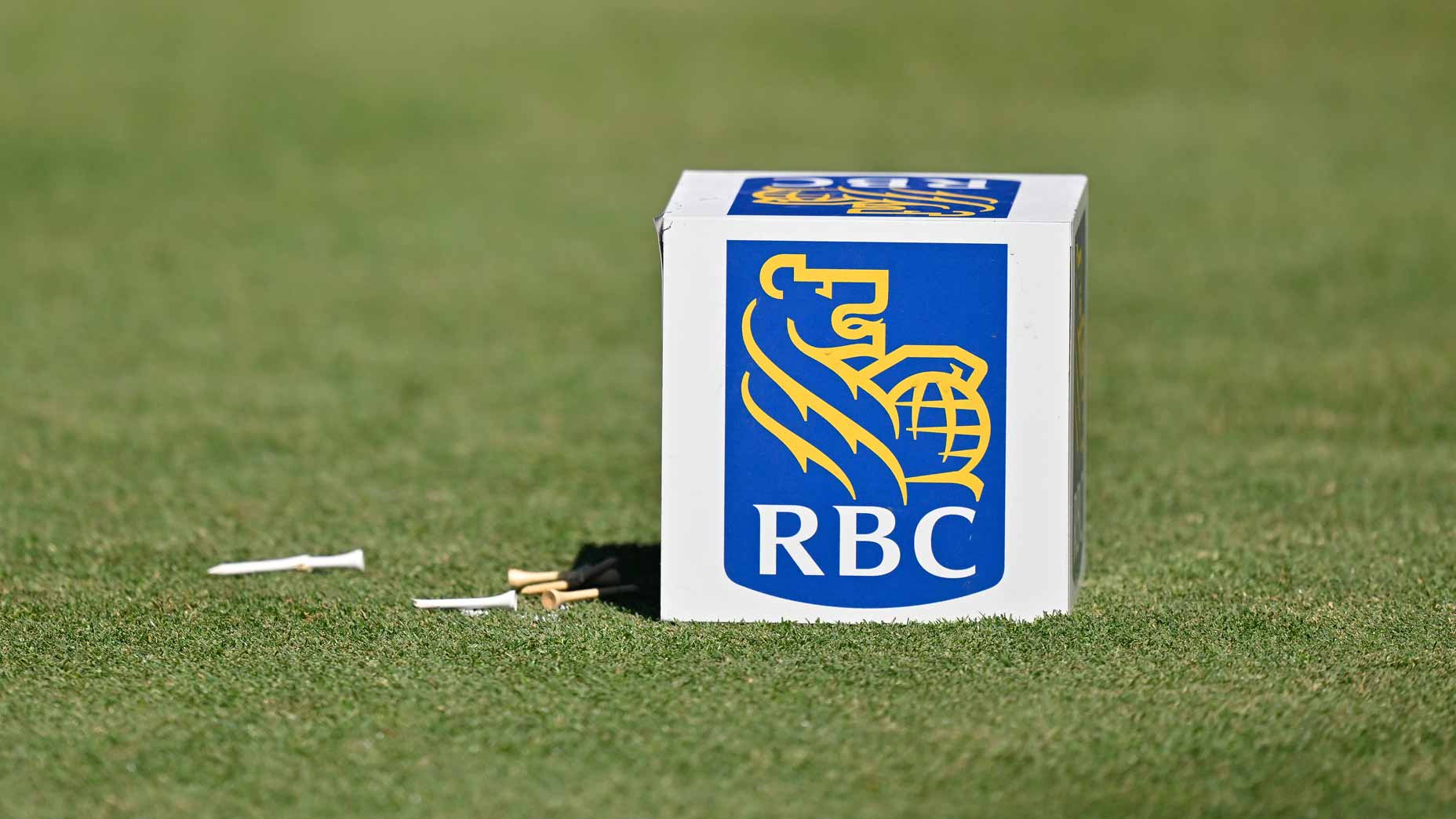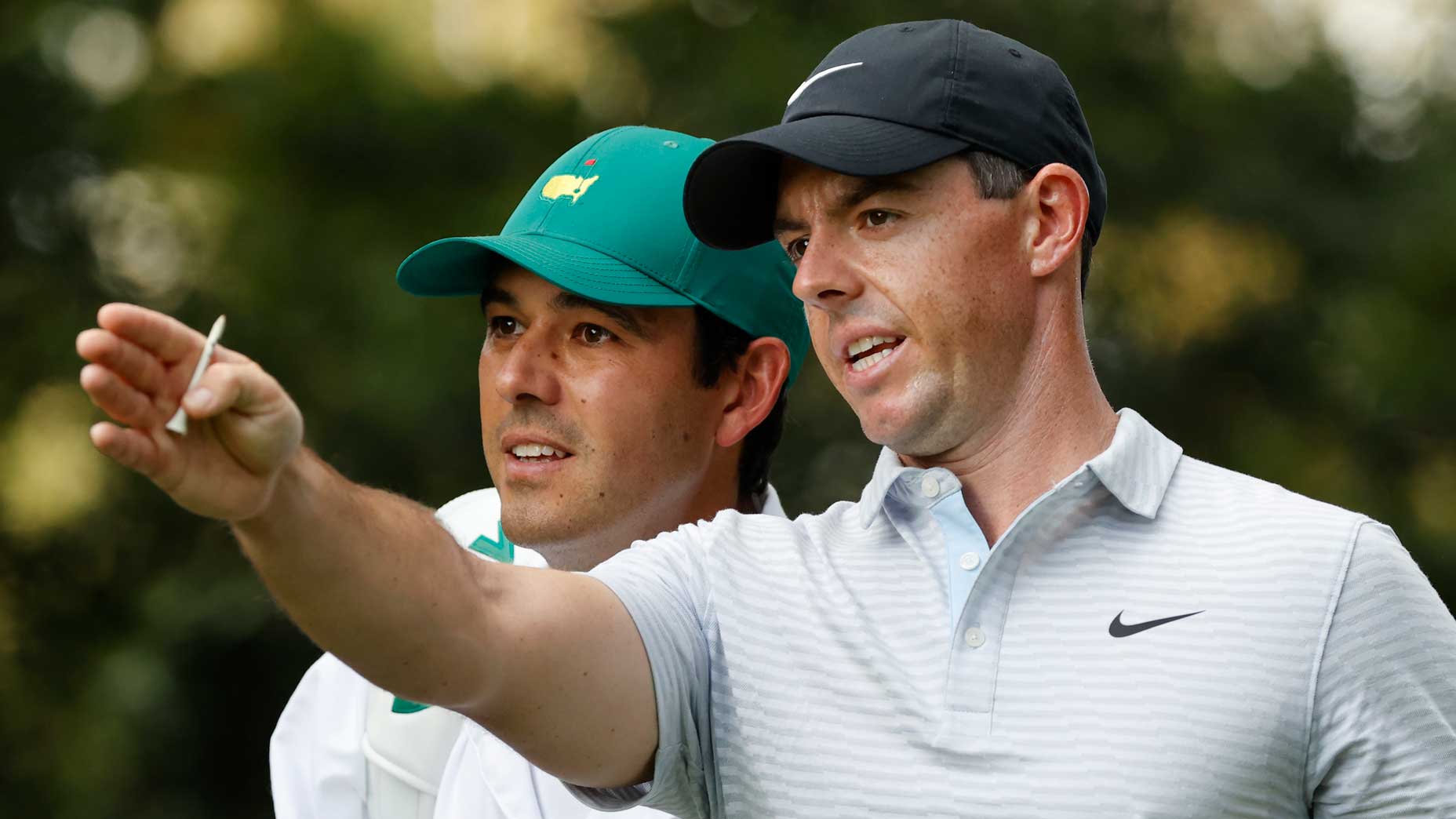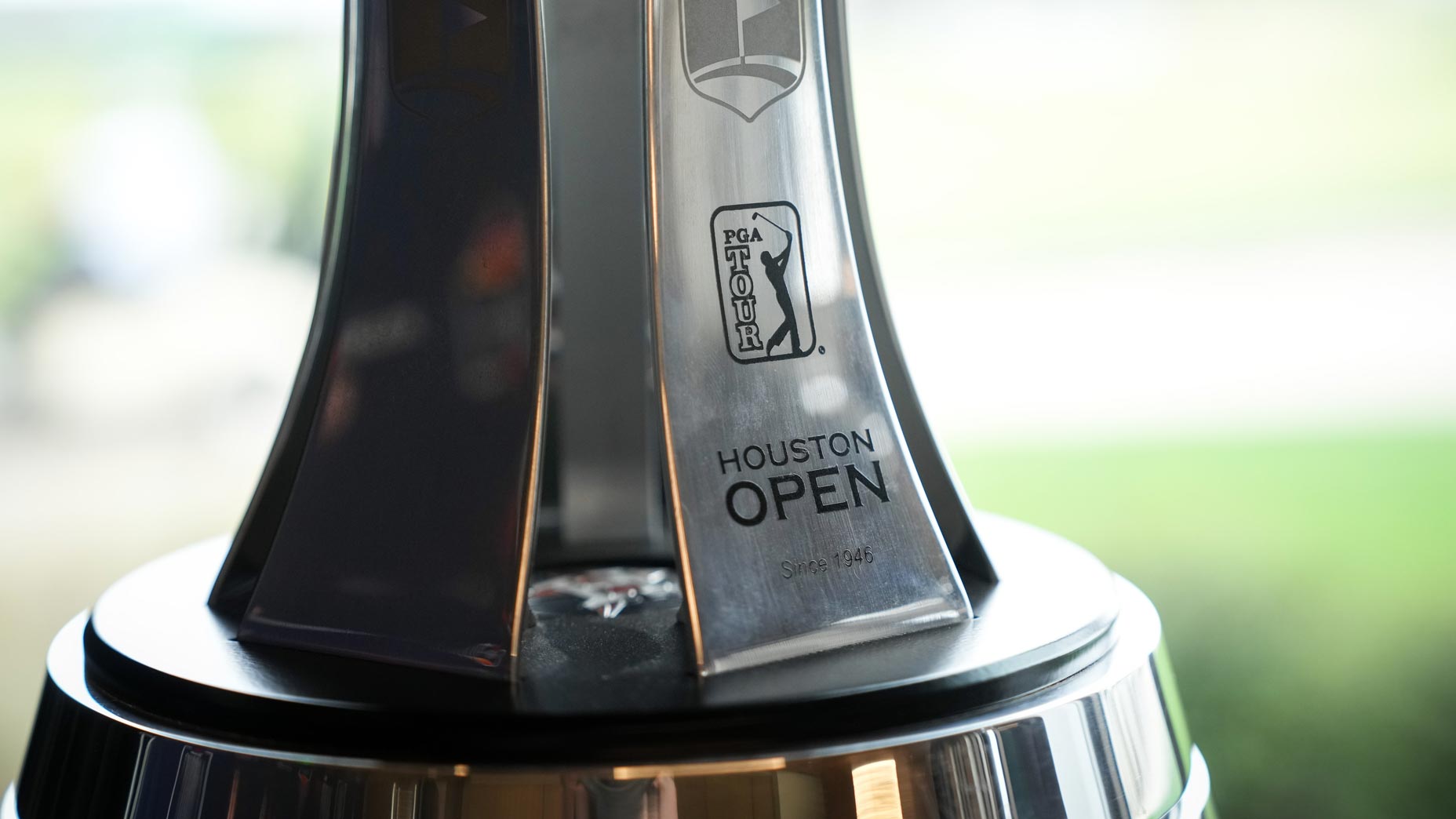The 42nd Ryder Cup was packed full of dramatic storylines: Tiger Woods’s comeback to the team; Phil Mickelson’s aging form; the long streak of European victories on home soil. Here, our staff reflects on their most memorable moments in our Lessons from Paris.
Vets find new meaning in their Ryder Cup years
When you go to a senior event, the best thing about it is not seeing the gents make their swing, interesting though that is. It’s seeing the gents, period. And so it was for me at Le Golf National, with the assistant captains and the former captains.
It had nothing to do with their age, although all the former captains and many of the assistants are past 50. No, it’s more that they’re past their playing primes but still finding some semi-useful way to stay in the game. There’s Lee Westwood; Remember when he had that putt at Torrey to get in the playoff? Wonder what he’s telling Rory here. There’s Tom Lehman, and his very tan wife, Melissa. Had he not won that British Open, he wouldn’t likely be here. Zach Johnson, driving a golf cart. (Maybe he should have been driving a golf ball?)
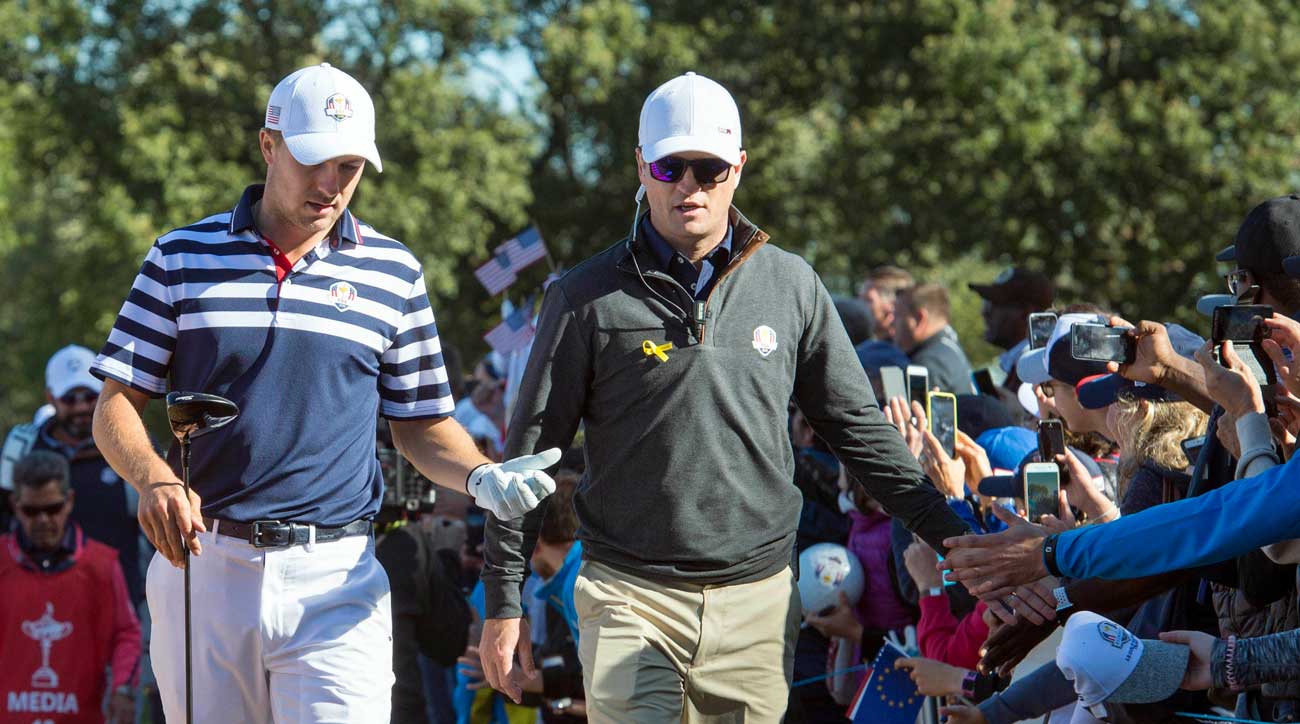
Steve Stricker is literally a white-beard now. Is he the next captain? Then Phil in 2022 and Tiger after that? You have to have be an assistant captain — excuse me, a vice captain— before you can be an assistant. At least once. Ideally twice. Task Force rules! There’s ol’ Ben Crenshaw, soaking up the strong sun, on the sidelines now, taking the action in. When he was captain, in ‘99, he had two assistants, Bruce Lietzke and Buck Rogers. He had no weather forecaster, no team statistician, no anything, really, except that feeling. He won with feeling and he lost with feeling, too. His game left the building years ago, but there he was, taking it in, a reminder that the scorecard is a starting place in this game but not a finishing one.
— Michael Bamberger
So I was wrong, but what a fun ride it was
Perhaps you heard that I made a little prediction regarding this Ryder Cup. It was expressed with considerable hyperbole, because why not? If you believe something you might as well push all your chips to the middle of the table. Going totally over-the-top made the column more fun to write, hopefully more fun to read and certainly led to endlessly entertaining banter on Twitter in the (interminably) long run-up to the Cup. It did put me in an awkward position, though. When it comes to the Ryder Cup I travel on no passport and am an impartial observer; this time I had more at stake than any of the actual participants! There is no cheering in the press room but I might have said a few silent prayers throughout this Cup, not that they helped. To put it mildly, the prediction did not pan out. This incredibly talented, accomplished collection of U.S. players was so pitiful I was embarrassed for them…and myself.
I knew that as soon as the Cup was lost I was going to hear about it from the good people of Europe, and beyond. That’s cool; you dish it out you gotta take it, too, and if there is one cultural universal on this fractured planet it is that no one likes a brash American. Sure enough, my Twitter feed melted. Every time I refreshed it on Sunday evening there were another 200 or 300 or 400 notifications. It was wild. Some of the I-told-you-so’s were so clever and creative I had to laugh, but other kinds of abuse bubbled up from the darkest depths of the Internet. I certainly learned a lot of new words that are not fit for a family website like GOLF.com. It’s an interesting anthropological question, why so many people took this so deeply personally. No one was curing cancer at Le Golf National. The Ryder Cup is great because it arouses passions, but it’s just golf. Right?

Despite evidence to the contrary, I do have feelings. When countless strangers say mean things about you it’s hard not to feel a little blue. I slinked into the European team’s victorious press conference knowing more comeuppance awaited, especially because vice captain Lee Westwood had already been hazing me on Twitter. But then something unexpected happened: the players were utterly charming. As soon as Ian Poulter sat down at the dais he locked eyes with me in the sixth row, raised his champagne glass and winked. Sergio Garcia, wearing the biggest cat-that-ate-the-canary grin I’ve ever seen, gave me a little wave. I’m used to dealing with hypersensitive American pros, who lash out at any criticism, but there was no edge to these interactions. The vibe was too festive for that. Rory McIlroy interrupted some otherwise cogent remarks about team chemistry to ask the room where I was sitting. I raised my hand and the whole team pounded the dais and yelled a teasing, “Heeeeeeey!” It happened again when I asked Francesco Molinari a question about his singles opponent Phil Mickelson, whom I was writing a story about.
As the press conference ended a few of the players and their captain, Thomas Bjorn, cheekily shouted their thanks to me for my contributions to the European victory. With all of that, a fog lifted. It was edifying to feel this generosity of spirit. The players get it, much more than I expected. The Ryder Cup is the biggest show in golf, replete with gala dinners, musical entertainment and multiple wardrobe changes. For better and for worse, my spoutings had become part of the show. It made the victory a tiny bit sweeter for the European team and, apparently, a lot more enjoyable for its fans. It certainly gave many of us something to talk about during what was otherwise a Cup that lacked any drama. Maybe being woefully wrong isn’t so bad after all.
— Alan Shipnuck
Mo’ Ryder Cup, mo’ awful predictions
APPROACHING THE EASTERN SEABOARD, Norwegian Air Flight 7191 — It’s 3:31 a.m. Paris time, or … wait, is it 4:41 a.m.? Don’t know. Don’t care. Out of sorts. Can’t sleep. Never can on flights, but especially this one. Half my brain is still mildly jet-lagged from the flight to Orly six days ago, the other half fried after several long days at Le Golf National capped by Bordeaux-fueled nights at our charming 15th-century Airbnb with countryside vistas and a creepy sub-basement dungeon with the words “Happy Land” above the stone stairwell leading down to it.

The “surprising” happenings at the 42nd Ryder Cup have added to my brain scramble. Turns out we so-called experts don’t know everything, even when the facts are right there in front of us. Last week was golf’s Hillary v. Trump, that stunner of an election when the signs of the outcome were right there, coursing through the veins of America, and yet virtually every poll, every pundit, missed them.
Positive indicators were also there for the scrappy, drama-free Europeans: an unfamiliar host venue that handcuffed America’s mashers; a drained U.S. team coming off the grind of the FedEx playoffs and managing weirdness between their one-time super-team of Patrick Reed and Jordan Spieth; a highly underrated Euro side with more heart than Rudy, backed by surprisingly voluble galleries. (The French may not be personnes des golf but they were last week, buoyed by droves of wig-wearing, Moliwood-mad fans who showed up from across the continent.)
Finally, crucially, there’s this, and it has been said before: this three-day, five-session, 32-point competition is way better suited to the Europeans. It’s clichéd to say they’re more tightly-knit, more team-oriented, but it’s undeniably true. Perhaps on Monday morning you saw that brilliant video of Molinari and Fleetwood in bed with the Ryder Cup. Can you imagine Tiger and Phil doing that? Or even lifelong buds Spieth and Thomas? You cannot. They’re too tightly wound, too tightly managed.
So, remember all this when the 2020 matches roll around and the talking heads are spouting off about strokes gained: this and strokes gained: that, about the Americans winning eight of the last 10 majors, about the macho layout at Whistling Straits playing to the Yanks’ strengths. History can be a useful guide.
— Alan Bastable
Man in his Arena
Blessed are we to cover sports. They give you goosebumps much more than politics.
But if I’m being fair, golf doesn’t give me goosebumps like other sports do. That probably has something to do with the setting (and the fact that I’m a sucker for hoops). Anyhow, Jordan Spieth at Augusta (twice) and Tiger Woods at Bellerive make up the short list of my goosebump moments. Adding to it Sunday: Rory McIlroy at the Ryder Cup.
But how — Rory lost his match? JT took him down! Well, it really wasn’t Rory giving me chills. It was his name, and the thousands of people chanting it just moments before his singles match.
One thing I’ll never forget: the man @McIlroyRory, in his arena, thousands chanting the one word that matters. pic.twitter.com/moF9oTiowk
— Sean Zak (@Sean_Zak) September 30, 2018
The simplicity of the moment was beautiful (especially for a guy on top of the grandstand). There you stand, on the tee, surrounded by thousands. They’re a lot like you, in the sense that they love this game and want so desperately to play it well. As well as you do. There they all are, poorer in their checking account having withdrawn hundreds of euros to watch you whip that club at that ball.
They’ve congregated here in your arena and because you were born and raised on the European continent, they’ve got your back. They’re bellowing your name. Don’t look back, that grandstand is intense. (It gave Rory chills on Tuesday when it was empty.)
Look forward, I guess? 500 yards out there, on the other side of the lake, there are thousands more, answering those bellows with bellows of their own. One word and nothing more: Roar-ee, Roar-ee, Roar-ee, Roar-ee. If this is your battleground, how can you beat it?
It was all reminiscent of a gladiator’s realm. Let the anticipation for Rome’s Ryder Cup commence.
Sean Zak
A long way from freshman year
I have a few friends who are really into golf. Michel and Rema are two of them. Michel was my freshman-year roommate at the University of Michigan, and after graduation we remained great friends while embarking on vastly different career paths. (He’s now a successful dentist; I’m inexplicably compensated for attending golf tournaments.) Last winter we both became dads for the first time — our kids were born exactly one month apart. When Michel proposed to Rema a few years ago, he did so mid-round at one of their favorite tracks. One day before their wedding, they hosted friends and family at a golf outing-slash-rehearsal dinner. So yeah, these two love golf. In the run-up to this Ryder Cup, Rema found a package with two-day tickets to the matches, and they went all-in.
On a gorgeous Saturday afternoon about 4,000 miles from our freshman dorm, I caught up with Michel out at the concessions. He and Rema were traveling with another couple, and the whole crew was clad in star-spangled gear. Represent!
At that point the U.S. was trailing in the matches and things looked bleak. We sat down for lunch in a sunny spectator picnic area, sharing a table with a few strangers — Americans and Euros alike — and discussed the state of the competition.

“Do you think we have a chance?” said Rema.
The group kicked it around. I confidently assured everyone that the U.S. could win as long as they stayed within four, because there had already been two four-point comebacks in the event’s history. This seemed to make everyone (other than the Euros) feel a little better. Then we ate burgers and fries and pondered what the heck was wrong with Patrick Reed, what ghastly scores we’d shoot at Le Golf National and, of course, U.S. politics.
On Sunday morning the U.S. trailed by four and I met up with Michel on hole 2, where I slipped him one of the small radios they dish out to scribes in the media center to help us follow the action. (Hey Ryder Cup: bill me!) He and I have seen our share of big sports events: Big Ten football and hoops, Rose Bowls, World Series, NFL games. I asked what he thought of the weekend in France.
“There’s nothing like this. There are so few groups and it’s intense,” he said. Then a group of dudes dressed in matching blue and yellow strolled past. “And the fans are unreal.”
Know what else is unreal? Catching up with old friends while halfway around the world. The Ryder Cup: there’s nothing like it.
— Jeff Ritter
The wacky world inside the ropes, where everyone is invited
Not that anyone was counting, but, inside the ropes at a Ryder Cup is nothing like being inside the ropes at, say, the Masters at Augusta National. For starters, you can’t go inside the ropes at the Masters. Not media, not wives, not managers — no one but player, caddie and marshal. At the Ryder Cup? Come on in!
It’s bizarre. Save for the Masters, most tournaments keep numbers on the inside to a minimum. Some media, officials, volunteers, a sign bearer, etc. But at an exhibition like this one — one that includes free passes aplenty for pros — the more the merrier. The collection of characters is truly remarkable. Like, for example, those inside the ropes when Tiger Woods and Bryson DeChambeau squared off against Tommy Fleetwood and Francesco Molinari on a sunny Saturday afternoon.
Walking down the fairway of the par-4 6th hole, there were enough bodies to pack a Trader Joe’s. Journalists, players, caddies, kids, men with top hats, Tiger’s girlfriend, police officers, friends with phones and Rickie Fowler’s caddie.

One person looked like Jim Furyk (they were not), another looked like Davis Love III (they were not) and another like David Duval (they were!).
Not that anyone was counting, but, there were media marshals — but also spectator marshals — a sound woman, a microphone guy, a camera crew, TV analysts, radio commenters, a women with a European flag, a rules official in a sports coat, a boy with his arm in a sling, a sign bearer, spotters, stats guys. The man carrying the large camera stand seemed to have the toughest gig, while the man with the plastic bunker rake seemed to have the easiest. Jim Furyk’s wife was there, and so were two 20-somethings trying to secretly hold hands, several women in European track clothes, an older gentleman with a fanny pack and a player care attendant.
Not that anyone was counting.
— Josh Berhow
The “Augusta of France”
Morfontaine Golf Club was described to us as the “Augusta National of France.” But our day didn’t feel particularly glamorous as I pulled our rental minivan over to the side of the road while my colleague Sean Zak ran back to a nearby gas station searching for a stray bit of WiFi (our data plans weren’t working).
Our previous night had ended late, as watching Tiger Woods’s win kept us up into the wee hours. And our morning had started early, with a trip from our AirBnB back to the airport to pick up the rental. We weaved through the chaos of Paris traffic out toward the countryside north and east of the city but eventually lost our directions and navigated by feel, which isn’t a particularly effective strategy when you can’t read the road signs and don’t know quite where you’re headed anyway. When we eventually arrived, oh was it worth it.
I’m inherently skeptical of private clubs, and so I held trepidation as we were buzzed through the locked front gate. But the no-frills nature of the place appealed immediately. We parked in the gravel lot adjacent the old brick clubhouse and made our way uncertainly through the front door. There we checked in with a stern woman who sat in a drab office filled with papers and aged golf-related paintings. It was the furthest thing from a pro shop I’ve ever seen. (The pro shop itself? That was a literal closet across the hallway. I could have stood in the middle and touched both walls.) “You should be able to go out now,” she told us simply. No more encouragement needed!
If a hybrid of Pinehurst and Bandon Trails were built somewhere near the Maine-New Hampshire border, you’d get something with the vibe of Morfontaine. It’s pretty and rugged. Crooked pines frame the wide playing corridors, while the underbrush is all cleared out, giving the place an open feel. Stray off the beaten path, however, and you run into swaths of torturous heather flora that makes play near-impossible — if you find your ball, that is.
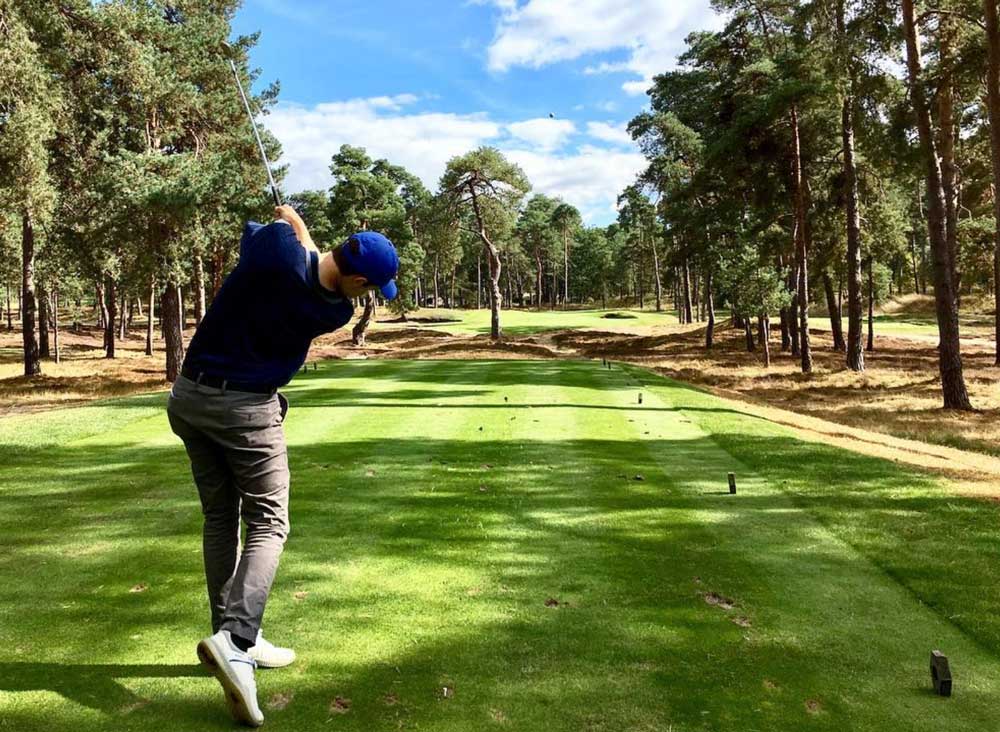
Morfontaine’s minimalism extended to its amenities. There is no snack shack or beverage cart — nor, for that matter, many carts of any kind — just a single water fountain, and hardly any signage (the distance markers hidden in the fairway are in meters, which may seem obvious to you, but took us two holes to figure out). A man who had been playing by himself joined us after the 8th hole, which was a blessing. He showed us around from there and, as an ex-pat himself, spoke to some of the differences between French and American golf cultures.
Some of these differences sounded great (More women playing! More walking! Less clubby excess!) while others are a matter of taste (no golf carts and not much mid-round boozing) and others still were unfortunate (low participation numbers, mainly private clubs). Morfontaine’s membership seems largely comprised of the Paris elite, and is extremely exclusive — we were reminded that we were “extremely lucky” to have earned a tee time.
The rest of the main course was enjoyable. The terrain called for a variety of shot shapes but allowed for different playing styles, too, including running approach shots along the contours of the ground. Sean kept remarking how quiet it was out there; for a couple Manhattan-dwellers, the silence of a sparsely-populated golf course in the French countryside was quite the shock.
But the greatest thrill of the golf day came after we shook hands on 18, when our playing partner posed the question: “Do you want to see the original course?” Um, yes. So he guided us around the pro shop and onto an unmarked tee box for some bonus golf. In addition to the modernized tournament course, Morfontaine boasts the “Vallieres Nine,” which was the property’s original course, constructed more than a century ago. The hole layouts are varied and quirky, while the greens are the real stars: massive humps, ledges, and slopes ran through each putting surface, allowing for creativity and imagination. The stretch of 2-3-4 was particularly spectacular. No. 2 was a short, downhill par 3 with a wild green. No. 3 was a drivable, uphill par 4 with a wilder green. And No. 4 was another short, downhill par 3 with the wildest green yet. Despite (because of?) its advanced age, the place felt revolutionary, the sort of fresh take on golf course architecture that people describe getting from Sweetens Cove, the acclaimed nine-holer in Tennessee. It was a great day of golf.
— Dylan Dethier



